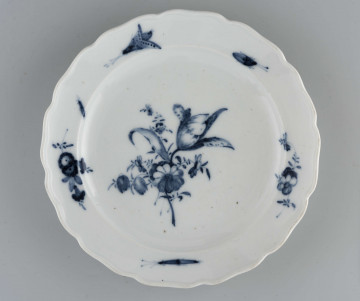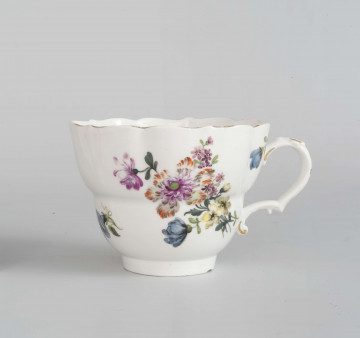
Creamer jug
1825 — 1835
National Museum in Lublin
Part of the collection: Polish porcelain
In 1783, thanks to the initiative of Duke Józef Klemens Czartoryski, the first Polish porcelain manufactory was established in Korze in Volhynia. The ‘white gold’, as porcelain is called, had to wait until 1790. The first director of the factory was Franz Mezer, who with his hard work, commitment and numerous ideas, made the Korean manufactory famous in a short time. Tableware was at the forefront of the product range. At the beginning of the factory's activity, Korean products were characterised by the imitation of designs from Western European countries. Korean porcelain, although using motifs taken from other manufactories, was not wholly dependent on European patterns. The factory started to produce many motifs in its own style and also started to combine domestic and foreign features. The people from Kortz who worked at the manufactory drew inspiration from the local culture, creating trails of field flowers, grasses, cereals or leaves, which were unheard-of in Europe.
The round shallow plate with a rim finished with a broad golden band and a collar decorated with a painted oak wreath with acorns is one of the examples of Korzec floral decorations. It is therefore not surprising that craftsmen, using folk traditions as inspiration to create new designs, applied the oak motif in this case. Oak trees, trees that were particularly often struck by lightning, were seen as the favourite trees of the old gods, and the widespread belief that it was in them that the power of the thunder god Perun accumulated, gave them extraordinary properties. As late as the 19th century in eastern Slavic Poland, it was still customary for a young couple to go round an old oak tree in the area three times. On Midsummer Eve, women usually smote men with oak twigs to give them strength, health and sexual prowess. With brooms made of the same twigs, for similar reasons, the men themselves were sometimes hit while taking a bath. Who among us has not heard expressions such as ‘big as an oak’, ‘healthy as an oak’, ‘tall as an oak’, or ‘the older the oak, the more complex the root’?
Author / creator
Dimensions
cały obiekt: diameter: 14 cm
Object type
dish
Technique
overglaze paints
Material
porcelain
Creation time / dating
Creation / finding place
Owner
The National Museum in Lublin
Identification number
Location / status

1825 — 1835
National Museum in Lublin

1763 — 1774
National Museum in Lublin

1735 — 1740
National Museum in Lublin
DISCOVER this TOPIC
National Museum in Lublin
DISCOVER this PATH
Educational path